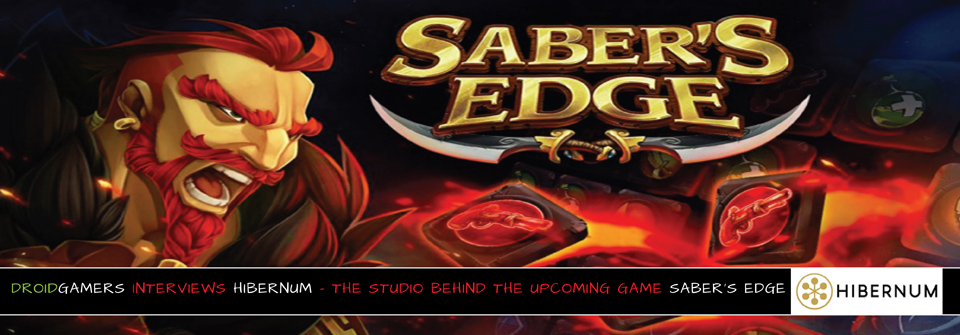Hibernum is a game development studio and much more. Located near the intersecting streets of Rue de Bleury and West Sainte-Catherine Street, you will find the creators of Magic: The Gathering Puzzle Quest, Bruce Lee: Enter the Game, and the soon to be released action-puzzle game, Saber’s Edge. DroidGamers had the opportunity to go behind the scenes to find out a bit more about Hibernum’s genesis and future plans. Frederick Faubert, President and Creative Director and Louis-Rene Auclair, Chief Brand Officer were kind enough to answer a few questions so that we could learn more.
Jaymes Carter: Hibernum is an interesting name for a game development company. Can you tell me what it means, and how does it embody the games that you create and or publish?
Frederick Faubert (President and Creative Director): Hibernum is a name that takes its roots in the latin word for winter. Coming from Montreal, winter, snow and cold is a big part of our lives. Linking the name with a logo that represents a snowflake, but also collaboration was a key part of the branding of Hibernum. The logo embodies teamwork and collaboration, and this is how we approach game making.
JC: It is my understanding that the company was started by you back in 2004. On your website, it mentions that you were “Inspired by your love of graphic arts, technology, and brand creation.” Are you a gamer too? And, delving a bit deeper, what was your original idea or vision for the company? Is it different now and/or better than you expected, in 2016?


FF: I was always interested by the capacity of video games to create immersive worlds. Although not a gamer per se, I felt that the storytelling ability and the depth of character and story development in video games was astounding. My early experience comes from toy creation and a background in graphic arts. Hibernum made its start by creating animation, stories and character bibles for some of the top video games produced in Montreal including Assassin’s Creed and Deus Ex Human Revolution. My early vision was always about creating exciting worlds and brands, the capacity to tell those stories at a more manageable budget on mobile devices really cemented that vision.
JC: That is fascinating. It is also intriguing to learn how your interest was piqued by the game industry. You had a more hand on approach it seems with toy creation and graphic design. I had no idea about the connecting links between Hibernum and Assassin’s Creed and Deux Ex: Human Revolution. Those are definitely juggernaut games in the industry. I guess it is more than good fortune that Ubisoft and Eidos have offices here as well. Hibernum is based in Montreal, Canada. We notice a lot of games being soft-launched in Canada. Can you explain why Canada seems to be one of the more popular places to test games?
Louis-Rene Auclair (Chief Brand Officer): Canada is often chosen for soft launch because the behavior and demographics of Canadian mobile users is a close ‘proxy’ for larger ‘key’ territories like the USA, but on a smaller scale. Canada can also be selected and measured on its own within the app stores.
With that said, we should clarify the difference between what ‘soft launch’ of a mobile app and simply ‘testing a game’ implies.
By the time a game reaches soft launch – whether it’s in Canada, Australia, or anywhere else – it is usually well past its alpha and beta phases, and the developer believes it’s already a fun, full experience for a customer. The game elements optimized in a ‘soft launch’ are not simply ‘bug fixes’… but are often gameplay features and customer preferences that can only be addressed by seeing large numbers of real users try the product.
For instance, if the game crashes halfway through a tutorial, that is a bug that can be ‘tested’ and ‘fixed’ before the game is released in any territory. Trying to determine something like ‘how hard’ or ‘how easy’ to make a game to maximize customer enjoyment, is something that usually requires real live customer data.
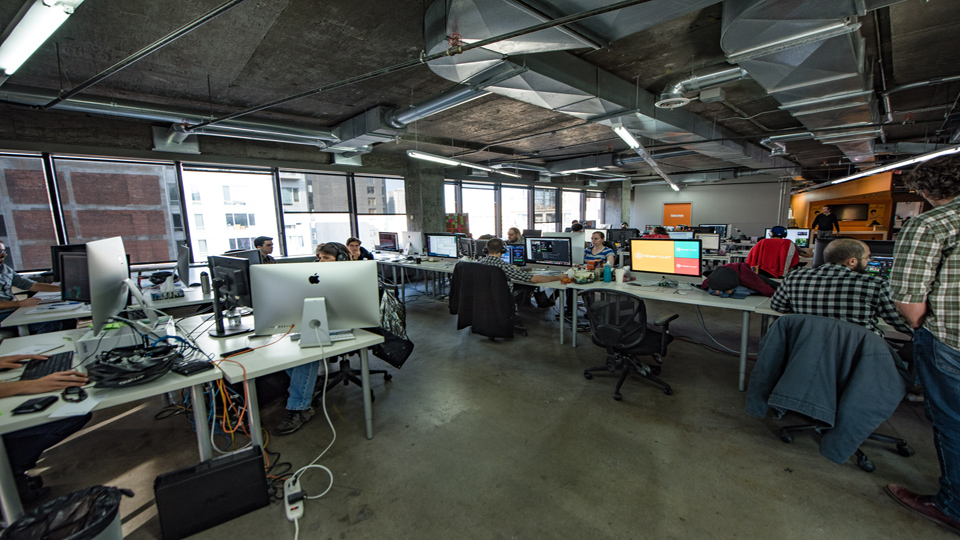
JC: Thank you for that clarification. We have noticed that some games stay in ‘soft launch’ for a fair amount of time. It is good to know that some developers are taking that extra time to balance their games, to make the end-user experience more enjoyable. I know there is a lot of work involved when it comes to creating and developing games. How large is Hibernum as a company? I see you do much more than publishing mobile games? Your website describes your company as one of the first “transmedia studios.” What do you mean by that exactly, and how does that enable you to make better games? What are the different sectors or markets that Hibernum is involved in, and why specifically are you interested in the mobile gaming market.
FF: Hibernum is 150 strong. We have some of the best talent in Montreal and the world to create great games. But yes, we do a lot more than publish games. We develop games on mobile, PC and console, and we create top-of-the-line trailers and animations for our own games, as well as our partners. We also invest in a strong R&D branch that focuses on pushing the quality and efficiency on mobile devices, to improve animation and art quality. We believe that as the platform becomes more mature, the taste of the player will mature and they will request deeper games with stronger storytelling and character development. To that end, a lot of our resources are geared toward preparing Hibernum for the future.
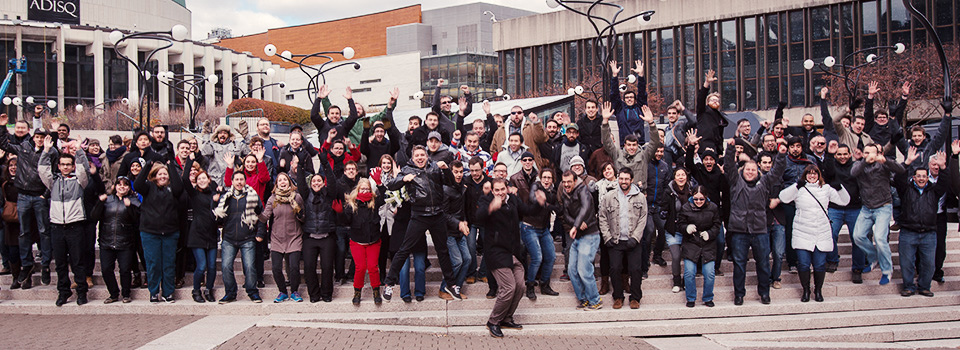
JC: In 2014 Investissement Quebec joined your team of creators and explorers and invested $5 million dollars in the studio. That is extremely impressive. How does a partnership like that benefit what your studio can do as a whole? There are so many independent game developers out there creating brilliant games, that don’t have anything close to that kind of influx of support. Does that allow you to focus more on quality in your efforts to create great games, and not necessarily feel the need to rush a game to market?
FF: Investissement Quebec joining our team was a tremendous vote of confidence for our studio. As you noted, there are many independent game developers in Quebec and the fact that they chose Hibernum to partner up with is amazing. With their support, we can now focus better on the products we create. In the end, it’s all about the quality of the games and knowing that we have such a strong partner, we can work with bigger titles, licenses and publishing partners to create games that will have a greater chance to become hits.
JC: Can you tell us more about the work atmosphere at Hibernum. We have heard some horror stories about working for game development companies. There are long hours, the pay may not be that great, and some talent suffers for just trying to get into an industry, that can at times be, brutal for those that choose to share their creativity?
Again, looking into more about your company, your website mentions industry-leading benefits for crew members. “Hibernum evolves into an industry leader in job flexibility and work-life balance for employees, announcing full flex-time, support for side projects, and company-wide bonus program for all team members.” That sounds great! Do you need any writers? Tell us more. It sounds like a great place to work.
FF: Great question. Being a highly creative studio, we have to provide a working environment suitable for a group of creative people. This pushed us to look at innovative ways of working and providing advantages, which will stimulate creativity. The secret, which is actually very simple, is to listen to our employees. We’ve put in place several company initiatives all based on employee feedback. Committees have been put in place, managers spend one on one time with employees, and an open door policy with the HR department allow us to develop advantages and working conditions based on real data from our employees.
At Hibernum, we value a healthy work-life balance, so it is also important for us to look at our working methods and our planning, when taking on a project to ensure that everyone stays sharp and that we meet our deadlines.

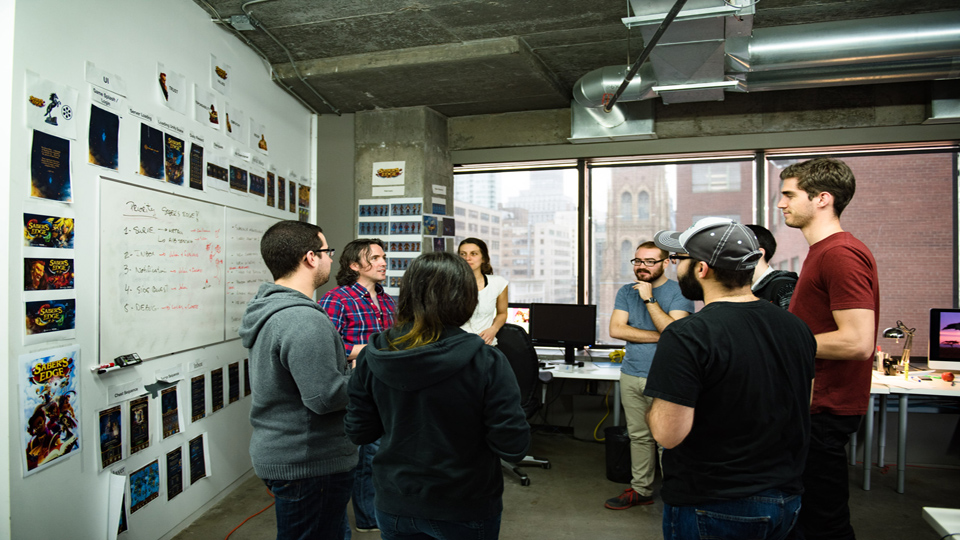
JC: It sounds like a great place to work, and from the photographs, everybody seems to enjoy what they do. Of course our readers want to know more about your mobile gaming efforts. How many games are you currently working on for Android/iOS, and is there a target number of games that you try to work on simultaneously? Is the studio set up to really focus on one at a time, while your other market sectors are working on their projects?
LA: We are currently working on around 10 projects. We don’t target a specific number of games, but there are so many creative minds in the office, that we always get new ideas and new partners that want to work with us. We have created dedicated teams inside the studio that are self sufficient with regards to game development. This means they focus solely on a single project and have a certain amount of autonomy to manage their projects. Of course, as the games get closer to important milestones, the studio focus turns to that game, but the teams are well equipped to take the games where they need to be to achieve success.
JC: Can you let our readers know the games that you have brought to market? There seems to be a focus on puzzle type games. Is there a reason that you are successful in that genre, or focused on that genre?
LA: Hibernum has worked on all kinds of games, from core gamer-targeted MOBAs to tons of kids and licensed titles. The kinds of projects we bring to market usually involve taking a character or story-driven concept from a partner or someone in our own studio, and then translating it into a fun gaming experience. Whether its Bruce Lee, Disney’s Cars or our own Saber’s Edge, creating a great game out of a great concept is our passion at Hibernum.
We are really good at puzzle games and we like making them. Hibernum has had a lot of success bringing new twists like RPG, Action or even Racing into the puzzle genre. Our teams are versatile enough to create innovation on top of well known gaming mechanics and that makes our games stand out. More titles are going to come to the market from Hibernum in the coming year that take the experience we’ve gained creating puzzle games to new genres outside puzzle. So look for RPG, fighting and zombie games coming to market very soon from Hibernum.
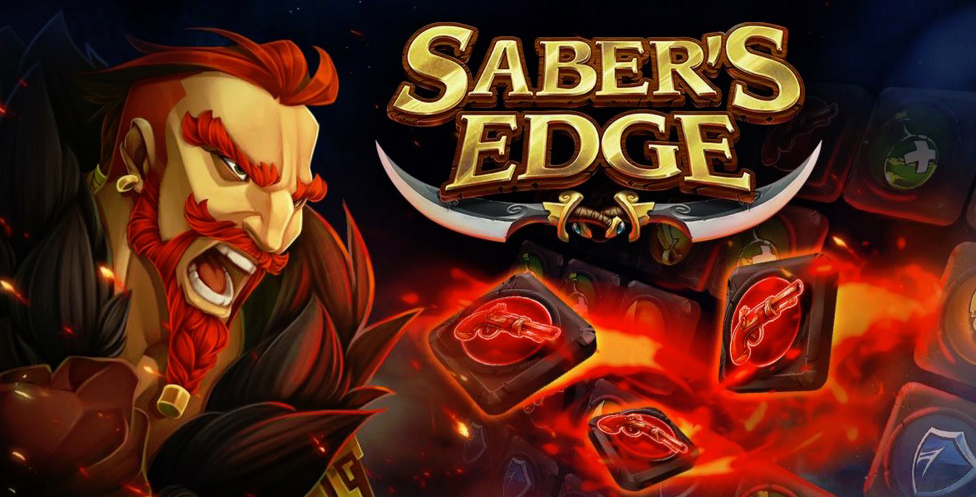
JC: Let’s talk a bit about Saber’s Edge. First, let me say it is an amazing looking game. We are eagerly awaiting the opportunity to play it. When I first heard about the game, I was a bit disappointed because it was an exclusive for the Amazon Fire Phone/Tablets. Was there a particular reason to showcase the game on the Fire devices?
LA: Originally, it was a Hibernum designed and Amazon published game. So we were working together on the game and it was then designed to be an exclusive on their platform. After its initial release, the game’s potential clearly showed that we needed to bring the experience to other platforms. Hibernum acquired the rights to the game and we are now the developer and publisher of the Saber’s Edge, and we are looking forward to strong success on multiple platforms in 2016.
I will let Saber’s Edge producer Marc-Andre Larose share the more intimate details of the game.
JC: We are glad that the game is being made available to more devices. You are right. I forgot to mention at the beginning of our interview that this is a two-part interview. We will share more about Saber’s Edge when we talk with Marc-Andre Larose in the next week or so.
I like the work that Hibernum is producing. Games like Saber’s Edge, Magic: the Gathering – Puzzle Quest, and Bruce Lee: Enter the Game. What other projects are slated for mobile devices? Will Hibernum continue to support Android devices? We have heard about the headaches when it comes to developing a game for multiple devices on this OS.
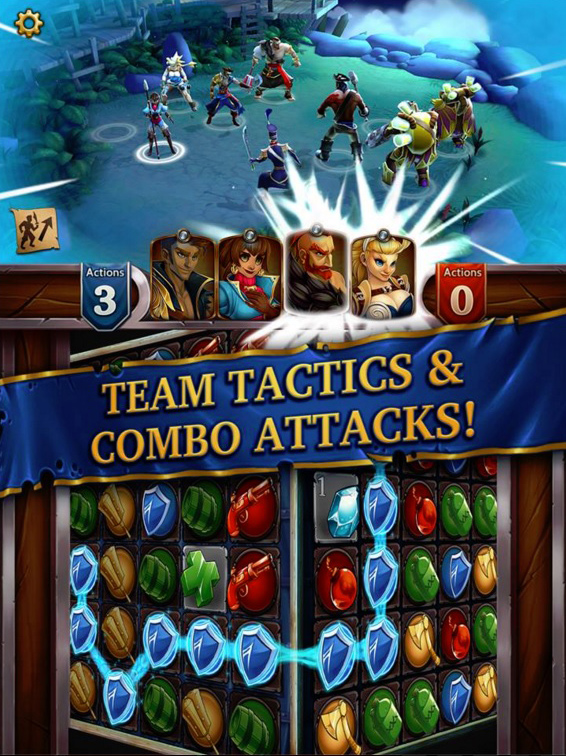
LA: Unfortunately, we can’t discuss specifics of the games we will be releasing in the next year. But you can definitely count on us to release great games on the top mobile platforms. So there is no doubt that we will continue to support the Android platform, as it generates a substantial amount of downloads and revenue.
JC: What is next for Hibernum?
LA: The mobile game industry talks a lot about KPI’s, ROI, ARPDAU, and all the great acronyms we like to use, but in the end, it’s all about the product. If you make games people like and want to play over and over again, the results will be there. So, what’s next for Hibernum, a continuous focus on creating the best games we can, so that our players are happy and excited about playing them. If we can achieve this, success will continue and grow with every game.
JC: We thank Frederick Faubert and Louis-Rene Auclair for answering our questions about Hibernum and the inner workings of their diverse studio. We will have more on Hibernum and in particular, Saber’s Edge, in part two of our interview, where we talk with the lead game designer Marc-Andre Larose. Saber’s Edge should be globally launching soon for Android devices. Look out for part two, where we learn more about the fascinating storyline, artwork and unique gaming amalgamation of the RPG and Puzzle genres that will be the key components to what makes Saber’s Edge the exciting game to play on your mobile devices.


